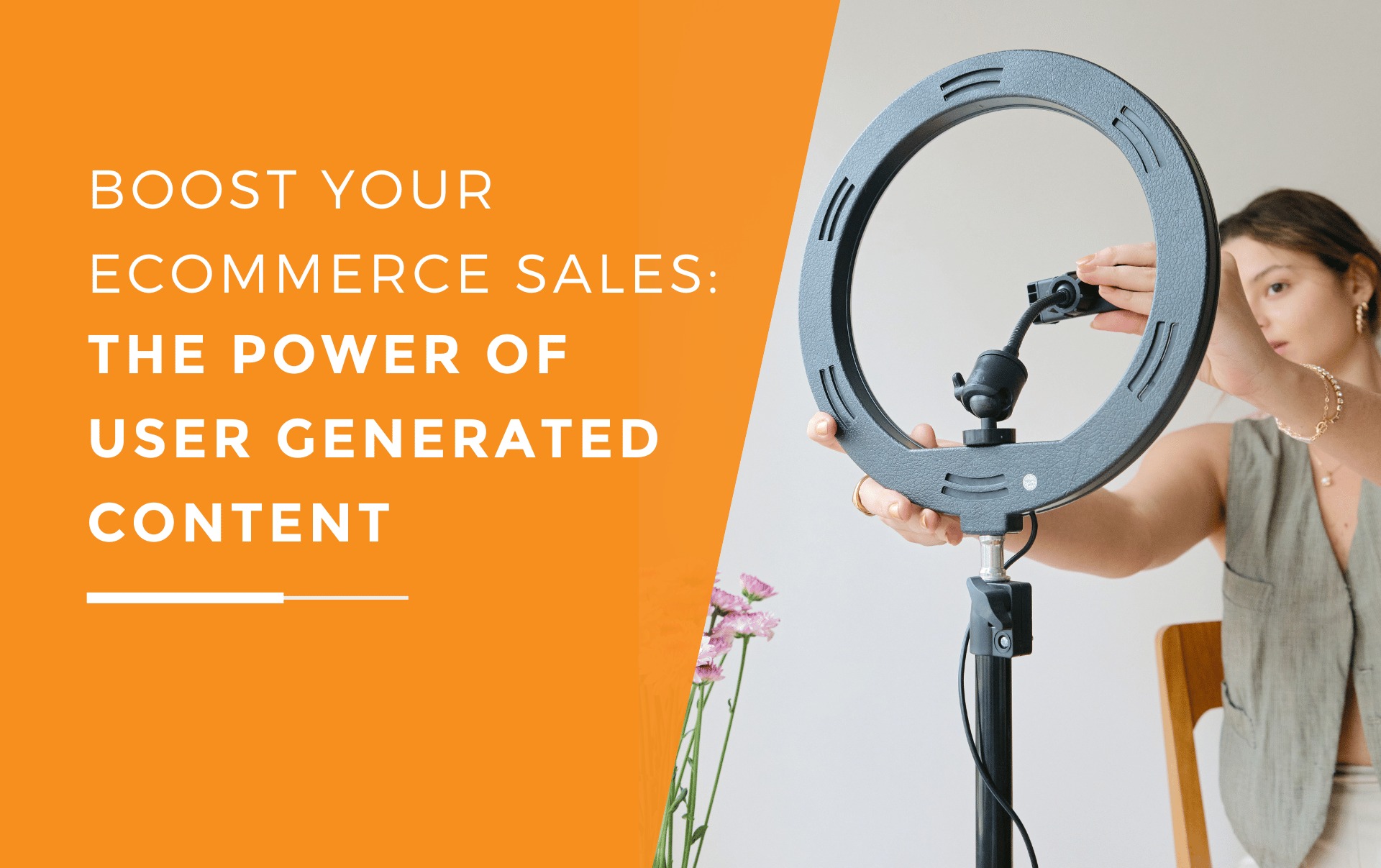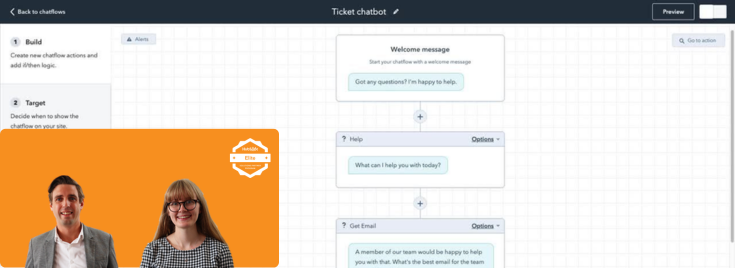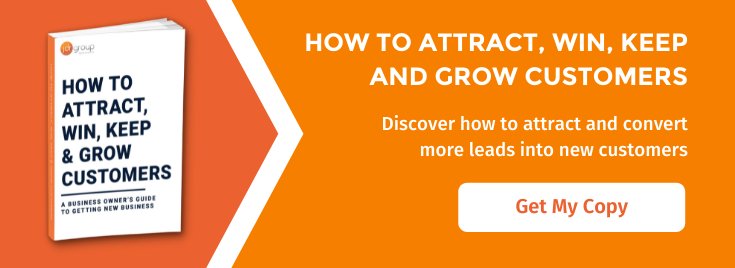Why 2025 Is The Year To Focus On Customer Retention (And What You Should Do About It)
by Will Williamson on 21-Feb-2025 09:30:00
.png?width=1100&height=750&name=Why-202-Is-The-Year-To-Focus-On-Customer-Retention-And-What-You-Should-Do-About-It).png)
With choices becoming more abundant in almost every industry, and customers becoming more discerning about where they invest their money, businesses need to work harder in 2025 to earn and maintain customer loyalty. The effort is worth it, though. While new business sales play an important part in growth, there is often a far greater ROI to be had from nurturing and retaining those relationships you’ve already built.
Experience consistently shows that it is more profitable to retain customers than to acquire new ones, making customer retention a core priority for sustainable growth. Retention has always mattered. However, in the competitive and potentially uncertain economic landscape of 2025, this key truth comes to the fore. Customer loyalty matters more than ever in 2025 because it’s the key to overcoming the impact of increased competition in your market.
Improved customer retention increases lifetime customer value, lowers your sales overheads, and gives you a more predictable cash flow on which to base forecasts and plan investments. This allows for better financial planning and allocation of your resources.
These three practical retention strategies will help ensure that your business keeps its most valuable customers engaged in 2025.
1. Hyper- Personalised Marketing
‘Hyper- personalisation’ is a new concept in marketing, made possible by the advent of advanced analytics, AI platforms, and a wider range of customer data than ever before. But why ‘hyper’- personalisation? Surely something is either personalised or it isn’t?
Not really. While ‘standard’ personalisation relies on basic demographic data, income categories and publicly available information such as a person’s job title or name, hyper-personalisation goes several steps further by considering a customer’s behaviours and interactions (with you and other suppliers), preferences, engagement history, and even external factors like the time of year and location.
By incorporating hyper- personalisation into your retention strategy, you’ll be able to offer the right messages, services, and products to specific customers at the perfect moment, creating deep and meaningful connections.
2. Predictive Engagement And Proactive Customer Service
Predictive analytics now allows businesses to be more proactive in their communications with customers, which could change the face of customer retention strategies during 2025. Making use of data from past interactions, as well as projected behaviours and market trends, you can now anticipate your customers’ needs and challenges and address them before the customer even realises they have them! It’s customer service, but not as we know it. While traditional customer service focused on reacting to customer feedback (usually complaints, let’s be honest), proactive customer service combines an ‘are you being served?’ mentality with a prescience derived from solid data insights.
This has profound implications for customer retention and happiness. For instance, if you are an SaaS business, predictive analytics could identify when a customer is likely to cancel their subscription based on declining engagement and login patterns. By interjecting early with personalised offers, deals, or content reminding the customer of your service’s value, you can re-establish the relationship and prevent churn.
The result is improved customer care and greater credibility in your business. The customer has trust in your ability to anticipate their needs and personalise your service to maximise their satisfaction. From their perspective, why go anywhere else? From your perspective, you get a stronger brand image, more word-of-mouth and social media recommendations, reduced churn and higher profits. It’s a win-win.
Proactive customer service and predictive engagement transforms customer service from something you do to not lose customers, into something that actively drives value for your business. It’s an exciting activity to be involved with in 2025.
3. Playing The Game – Gamification In The Retention Experience
Gamification – the inclusion of games and competitive interactive elements into a service or product – first revolutionised the mobile app market before making inroads into education (my children now play gamified maths apps as part of their homework), customer service, and even banking. The core idea that underlies games theory is to maximise engagement by building challenges and milestones into a service that unlock rewards, discounts, and badges. This triggers the customer’s human dopamine response and keeps them coming back for more.
To use an example from the SaaS sector again, a vendor could create a progress tracker on their app showing how many consecutive days a customer has used the service, with bonuses rewarded at different completion stages – e.g. a special badge for a streak of 30 days of consecutive logins, or for 500 hours of use (Audible, Spotify, and HeadSpace do this very well). Games theory taps into a customer’s intrinsic motivation to achieve goals and encourages sustained interactions with your products and services. It can also turn retention into an enjoyable and fun experience for your customers, avoiding any perceived pressure.
Find Out More
Get in touch with JDR today to discuss the marketing and sales challenges your business faces in 2025, and discover how our tailored marketing programmes can help you navigate a volatile market and achieve your growth plans. Send us a message by clicking here, or feel free to call us directly on 01332 982198.
- Inbound Marketing (SEO, PPC, Social Media, Video) (819)
- Strategy (360)
- Sales & CRM (191)
- Marketing Automation & Email Marketing (190)
- Business Growth (161)
- Website Design (160)
- Hubspot (136)
- Lead Generation (113)
- Google Adwords (98)
- Content Marketing (94)
- Case Studies (47)
- News (47)
- Conversion (44)
- Ecommerce (38)
- Webinars (33)
- SEO (24)
- AI (19)
- Events (19)
- Video (17)
- LinkedIn Advertising (15)
- Video Selling (15)
- Software training (13)
- Niche business marketing (11)
- The Digital Prosperity Podcast (10)
- Facebook Advertising (6)
- HubSpot Case Studies (5)
- November 2025 (6)
- October 2025 (17)
- September 2025 (16)
- August 2025 (14)
- July 2025 (14)
- June 2025 (5)
- May 2025 (19)
- April 2025 (15)
- March 2025 (13)
- February 2025 (13)
- January 2025 (8)
- December 2024 (2)
- November 2024 (4)
- October 2024 (21)
- September 2024 (4)
- August 2024 (8)
- July 2024 (14)
- June 2024 (16)
- May 2024 (25)
- April 2024 (15)
- March 2024 (18)
- February 2024 (5)
- January 2024 (10)
- December 2023 (6)
- November 2023 (10)
- October 2023 (13)
- September 2023 (12)
- August 2023 (14)
- July 2023 (13)
- June 2023 (14)
- May 2023 (15)
- April 2023 (13)
- March 2023 (14)
- February 2023 (13)
- January 2023 (15)
- December 2022 (13)
- November 2022 (6)
- October 2022 (8)
- September 2022 (22)
- August 2022 (15)
- July 2022 (13)
- June 2022 (16)
- May 2022 (14)
- April 2022 (16)
- March 2022 (17)
- February 2022 (11)
- January 2022 (8)
- December 2021 (6)
- November 2021 (7)
- October 2021 (11)
- September 2021 (10)
- August 2021 (7)
- July 2021 (7)
- June 2021 (4)
- May 2021 (4)
- April 2021 (1)
- March 2021 (3)
- February 2021 (5)
- January 2021 (4)
- December 2020 (7)
- November 2020 (6)
- October 2020 (5)
- September 2020 (9)
- August 2020 (18)
- July 2020 (17)
- June 2020 (17)
- May 2020 (10)
- April 2020 (21)
- March 2020 (24)
- February 2020 (21)
- January 2020 (12)
- December 2019 (23)
- November 2019 (12)
- October 2019 (14)
- September 2019 (16)
- August 2019 (15)
- July 2019 (13)
- June 2019 (6)
- May 2019 (8)
- April 2019 (4)
- March 2019 (2)
- February 2019 (2)
- January 2019 (2)
- December 2018 (3)
- November 2018 (24)
- September 2018 (11)
- August 2018 (9)
- June 2018 (3)
- May 2018 (6)
- April 2018 (14)
- March 2018 (12)
- February 2018 (16)
- January 2018 (15)
- December 2017 (15)
- November 2017 (18)
- October 2017 (23)
- September 2017 (19)
- August 2017 (28)
- July 2017 (27)
- June 2017 (25)
- May 2017 (18)
- April 2017 (17)
- March 2017 (16)
- February 2017 (17)
- January 2017 (14)
- December 2016 (21)
- November 2016 (27)
- October 2016 (25)
- September 2016 (16)
- August 2016 (20)
- July 2016 (19)
- June 2016 (14)
- May 2016 (20)
- April 2016 (24)
- March 2016 (22)
- February 2016 (28)
- January 2016 (27)
- December 2015 (28)
- November 2015 (19)
- October 2015 (9)
- September 2015 (12)
- August 2015 (5)
- July 2015 (1)
- June 2015 (10)
- May 2015 (3)
- April 2015 (11)
- March 2015 (14)
- February 2015 (15)
- January 2015 (12)
- December 2014 (2)
- November 2014 (23)
- October 2014 (2)
- September 2014 (2)
- August 2014 (2)
- July 2014 (2)
- June 2014 (7)
- May 2014 (14)
- April 2014 (14)
- March 2014 (7)
- February 2014 (2)
- January 2014 (7)
- December 2013 (9)
- November 2013 (14)
- October 2013 (17)
- September 2013 (3)
- August 2013 (6)
- July 2013 (8)
- June 2013 (4)
- May 2013 (3)
- April 2013 (6)
- March 2013 (6)
- February 2013 (7)
- January 2013 (5)
- December 2012 (3)
- November 2012 (2)
- September 2012 (1)
Subscribe by email
You May Also Like
These Related Blogs

How To Leverage User Generated Content To Boost Ecommerce Sales
User-generated content, or UGC, is an invaluable asset for boosting e-commerce sales for two reasons. Firstly, it creates a bank of social proof that …

Beyond the Inbox: How to Future-Proof Your Email Marketing Strategy
For years, email marketing has been a reliable tool for growing your database. But you've likely seen the same challenges emerge: a crowded inbox, sta …

Replay: How To Get More From Live Chat & Automated Chatbots (HubSpot Masterclass)
Adding live chat to your website can mean you provide a faster, more personalised experience for your website visitors. In this webinar you'll discove …




